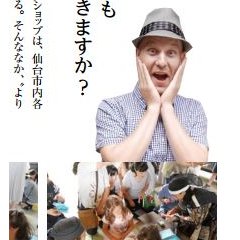Just a ten minute drive from Iwate’s Koiwai Farm is a village that lives and breathes traditional goods. While traditional products can be purchased practically anywhere in Japan, Morioka’s Handcrafts Village (Tezukuri-mura) is something special. It is one of the few places in Japan you can view, purchase, and create traditional products the way they were meant to be.
The craft village is a cluster of buildings that is divided into three zones. As you walk through the entrance you’ll be engulfed by the first of the three. This is the exhibition zone. Several shops sell local products and items made at the village. Keep in mind that because products are handmade the traditional way by craftsmen that spend years mastering their crafts, things will be expensive. However, with a little digging around the shelves I was still able to find some bargains and affordable mementos. I particularly enjoyed the Iwate wine that was on sale. I think the free samples definitely persuaded me to bring some home. There are also senbei crackers to sample. Even if you don’t buy anything, looking is free and there are many things to see. A huge iron tea pot sits in the store right next to miniature keychain pots of the same style. Meanwhile, an army of different sized toy horses smile at you as you walk by. The exhibition zone is the liveliest of the village and a treat to start or finish your journey. The second floor in the entrance way hosts a museum that exhibits craft artifacts from the area. Admission is free for the village, but extra for the small museum.
The second zone is the accessed after a walk through the many shops. Workshops line the village street enticing visitors with amazing sights. Here you can see traditional arts being made right in front of you. Open windows allow visitors to chat to a family that has been making toy horses for years, or to the chefs at the traditional candy store for their personal recommendations. I was able to make a senbei cracker by kneading dough, placing it in a griddle, and flipping it several times over an open flame. It was hot and delicious, albeit it slightly deformed thanks to my first try. That’s right, for an extra fee nearly all workshops will let you create your own masterpiece. From painting a wooden doll or pottery, to working with bamboo or dyes, these 30 to 90 minute classes will let you in on some of the master craftsmen secrets. Many food stalls offer similar lessons on location. You can also stop by for a quick bite to eat. You’ll be able to learn more about classes at the store fronts or at the information center at the front entrance.
The last zone is an area tucked in a corner of the property. It is not particularly impressive, though worth a quick stroll to get the most out of your trip. This is a restored horse stable and occasionally living quarters when the time called for it. The floor is dirt and the floors are made of earth. There are some period artifacts and a small but lovely garden outside.
Morioka’s Handi-works Square is a special place perfect for foreign tourists or families to experience traditional art first hand. Tezukuri-Mura occasionally hosts special events, such as their December holiday festivities, so it may be worth a look on their website or to call if you want to attend or to make sure you skip that day and avoid the crowds.
































